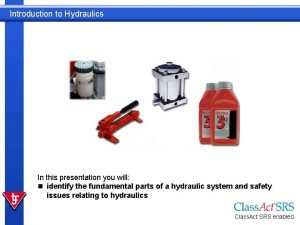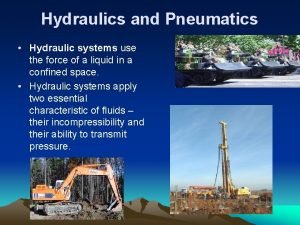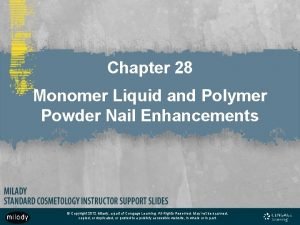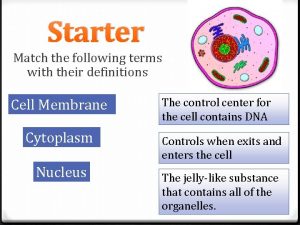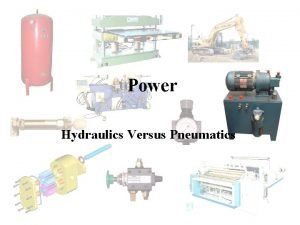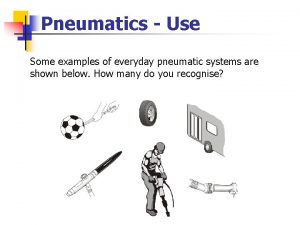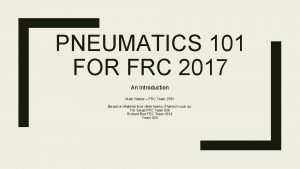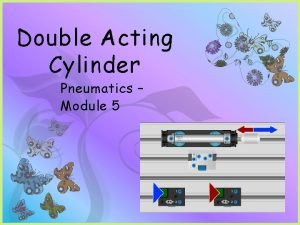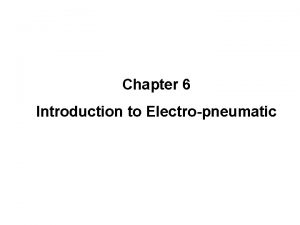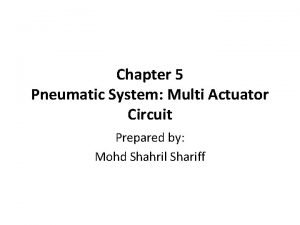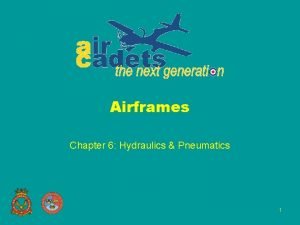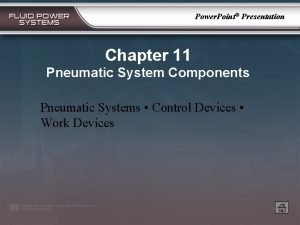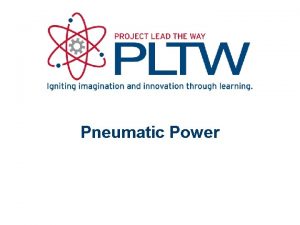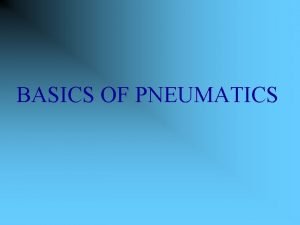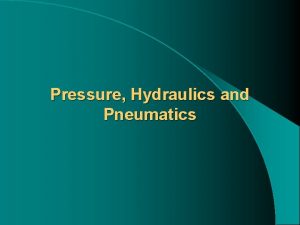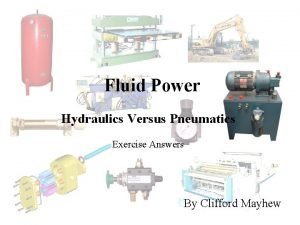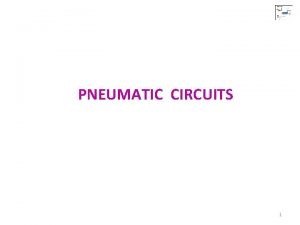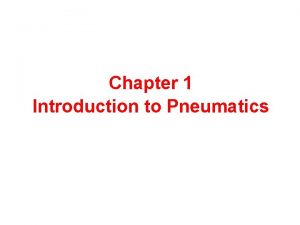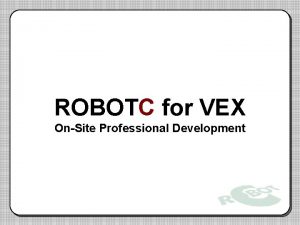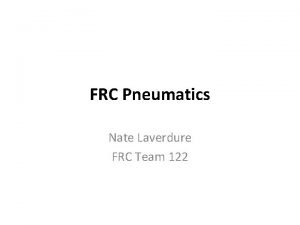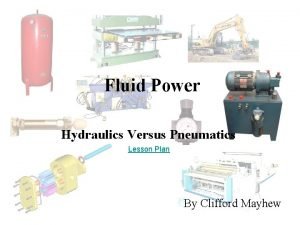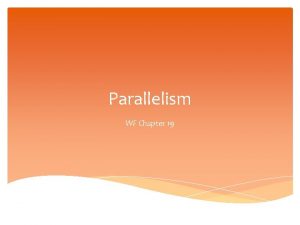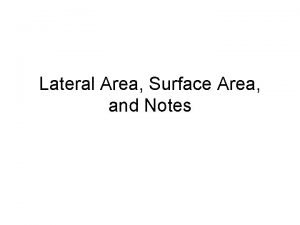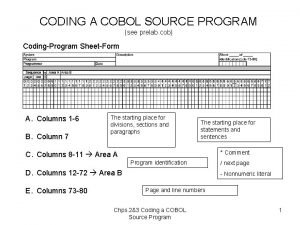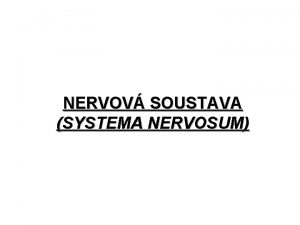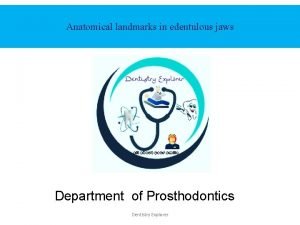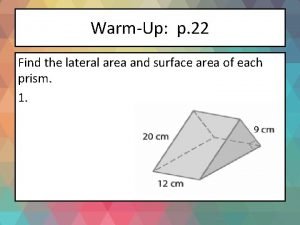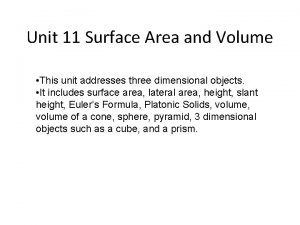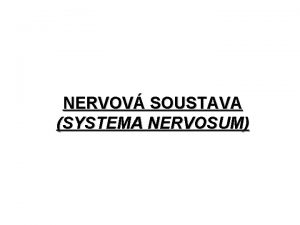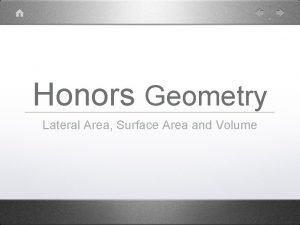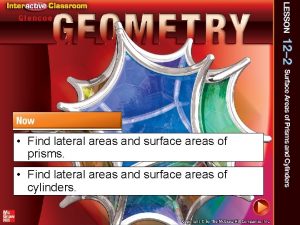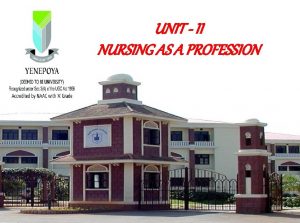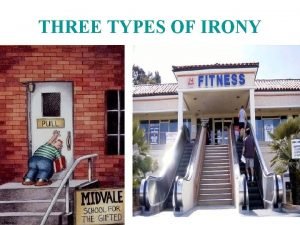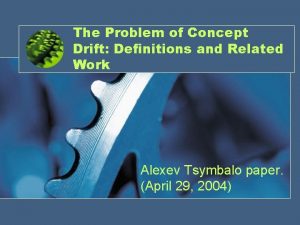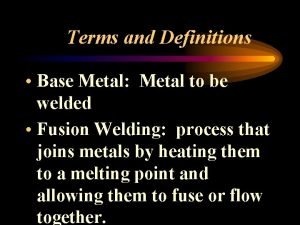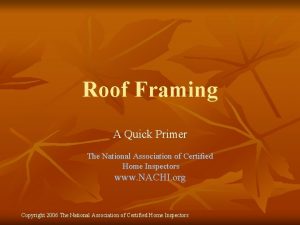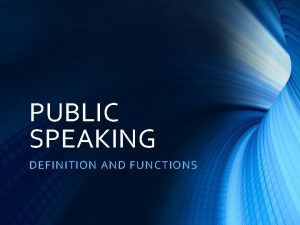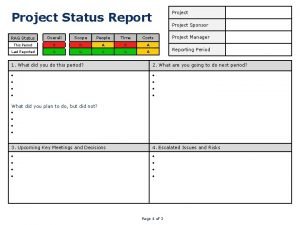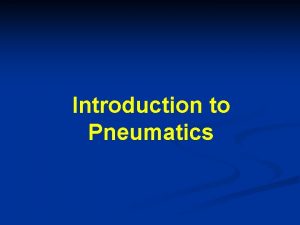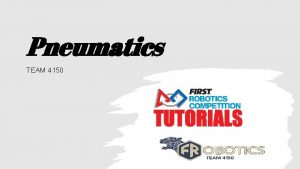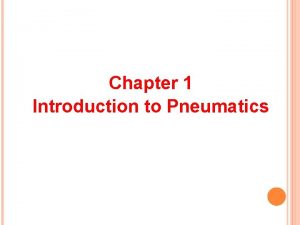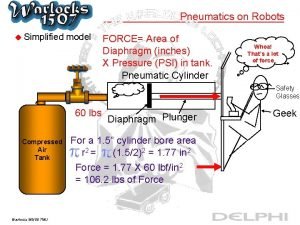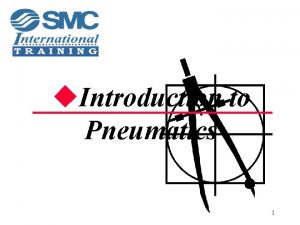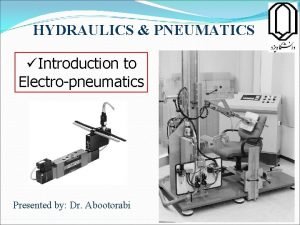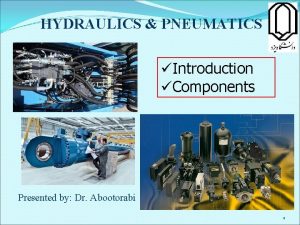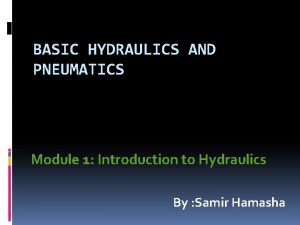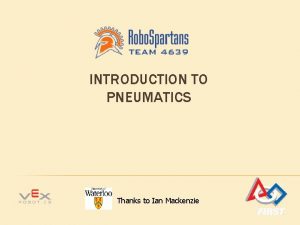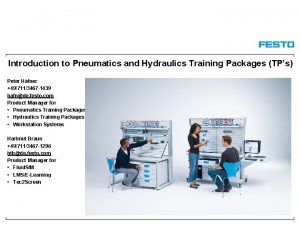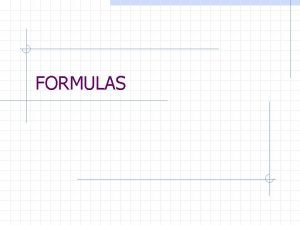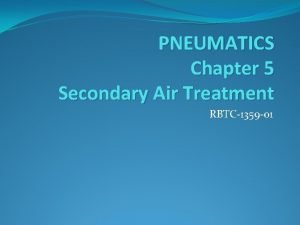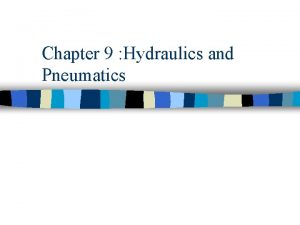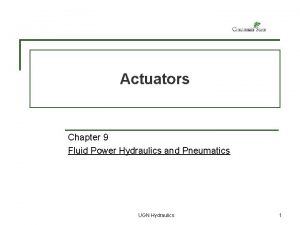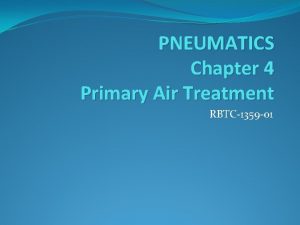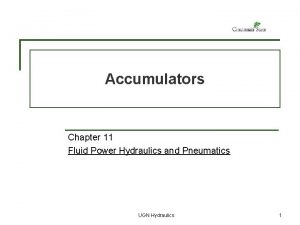Chapter 1 Introduction to Pneumatics Definitions Application Area





















































- Slides: 53

Chapter 1 Introduction to Pneumatics

Definitions & Application Area Definition Greek pneuma = breath (bernafas) The term pneumatics describes the use of compressed air in drive and control engineering. The introduction of pneumatics into mechanization and automation began in the middle of the 20 th century. An example of the early use of compressed air : Reconstruction of the water organ of Ktesibios (Arens 1960).

Definitions & Application Area Pneumatics principle PNEUMATICS is a branch of mechanics that deals with the mechanical properties of gases. Compressed air is used to transmit pressure in a variety of applications. For example, in tires and air-cushioned springs, compressed air acts as a cushion to absorb shock. Air brakes on locomotives and large trucks contribute greatly to the safety of railroad and truck transportation.

Definitions & Application Area Choice of Working Medium and System The choice of medium depends on the application. Some of the general, broad rules followed in the selection of a working medium are listed below. • When the system requirement is high speed, medium pressure (usually 6 to 8 bar) and less accuracy of position, then pneumatic system is preferred. • If the system requirement is high pressure and high precision, a fluid system with oil is good. • When the power requirement is high like in forging presses, sheet metal press, it is impossible to use air system. Oil hydraulics is the only choice • Air is used where quick response of actuator is required. • If temperate variation range in the system is large, then use of air system may run into condensation problems and oil is preferred. • If the application requires only a medium pressure and high positional accuracy is required then hydro –pneumatic system is preferred

Choice of Working Medium and System • Air is non-explosive, it is preferred where fire/electric hazard are expected. Oil systems are more prone to fire and electrical hazards and are not recommended in such applications. • Because air contains oxygen (about 20%) and is not sufficient alone to provide adequate lubrication of moving parts and seals, oil is usually introduced into the air stream near the actuator to provide this lubrication preventing excessive wear and oxidation.

Definitions & Application Area of Pneumatics Application Area Example Generation of linear motion clamping, feeding, lifting and lowering, opening & closing, pneumatic press, transfer table, tool loading, industrial robot etc Generation of rotary motion Applications in control Others screw drivers, grinders, tread cutters, drill etc sequence control, monitoring, locking etc workshop air, paint spraying, etc

Pneumatics Vs Other Drive Technology ADVANTAGES OF PNEUMATICS Pneumatics is used in reference to hydraulics for the following reasons Pneumatics is used in reference to electrics for the following reasons 1. The operation of actuators is fast. 1. Easily connected to an air supply and needs no separate power pack. 2. No return piping is required; the air is vented to atmosphere. 3. Clean medium with no mess when it leaks. 4. No fire hazard as with oil. 2. Will not start a fire through electric fault (Intrinsically safe). 3. Air motors are safe when over loaded and does not overheat. 4. Safer for operators (no risk of electrocution).

Pneumatics Vs Other Drive Technology DISADVANTAGES OF PNEUMATICS SYSTEM • Suitable only for low pressure and hence low force applications • Compressed air actuators are economical up to 50 k. N only. • Generation of the compressed air is expensive compared to electricity • Exhaust air noise is unpleasant and silence has to be used. • Rigidity of the system is poor • Air cannot seal the fine gaps between the moving parts unlike hydraulic system • Less precise. It is not possible to achieve uniform speed due to compressibility of air • Pneumatic systems is vulnerable to dirt and contamination

Pneumatics Vs Other Drive Technology COMPARISON BETWEEN PNEUMATICS & HYDRAULICS SYSTEM Hydraulic Pneumatic It employs a pressurized liquid as fluid It employs a compressed gas usually air as a fluid Oil hydraulics system operates at pressure up to 700 bar Pneumatics system usually operates at 5 to 10 bar Generally designed for closed system Pneumatic systems are usually designed as open system System get slow down of leakage occurs Leakage does not affect the system much more Valve operation are difficult Easy to operate the valves Heavier in weight Light in weight Pump are used to provide pressurized liquids Compressors are used to provide compressed gas System is unsafe to fire hazards System is free from fire hazards Automatic lubrication is provided Special arrangements for lubrication needed

Pneumatics Vs Other Drive Technology

Pneumatics Component Classification Pneumatic circuit elements are classed into FIVE primary groups. ELEMENT Example 1. AIR SUPPLY AND CONDITIONING ELEMENTS Compressor, Receiver, Pressure regulator, Filter, Dryer, Lubricator 2. INPUT ELEMENTS (electrical or pneumatic) Push-button valve, Roller lever valves, Proximity switch 3. PROCESSING ELEMENTS Logic valves (And / Or, etc), Time delay valves, Pressure control valves, Sequencer 4. CONTROL ELEMENTS Directional control valves, throttle/choke valves 5. ACTUATING DEVICES/ POWER ELEMENT Cylinders, Motors, Semi-rotary actuators

Pneumatics Component Classifications Power component Control Element Processing Element Input Element Supply Element

Compressed Air Fundamental Compressed Air Compressed atmospheric air which stores energy in its compressed state (usually greater than that of the atmosphere) and has the potential to perform work. Among the simplest ways that air can be taken from the atmosphere and compressed within a smaller volume is through the use of a hand pump. To see how a hand pump works, look no further than a simple bicycle pump, which takes air and pumps it into a bike tire when a person repeatedly pushes a hand or foot pedal. When the pedal is compressed, air enters the pump through an intake and is “pushed” into the bike tire via a plunger within the pump casing. Once the air has entered the tire, it officially has become compressed air, and the more air that enters the tire results in higher air pressure within the volume of the tire.

Compressed Air Fundamental Pressure measurement – Instruments used to measure pressure are called pressure gauges or vacuum gauges. A manometer could also be referring to a pressure measuring instrument, usually limited to measuring pressures near to atmospheric. Standard model for pressure gauge: 1. Bourdon tube pressure gauge 2. Diaphragm pressure gauge 3. Piston spring pressure gauge

Compressed Air Fundamental Pressure are measure in unit of: § Pascal, Pa (N/m²) § bar § psi (lbf/sq. in. ) § Torr (mm Hg) Conversion table for different pressure unit 2 6. 9 x 10-2

Compressed Air Fundamental Gauge pressure Pressure measuring devices normally measure the difference between applied pressure and atmospheric pressure and thus indicate gauge pressure (or vacuum pressure in the case of a vacuum gauge). The equivalent absolute pressure is determined by relating the gauge pressure to zero pressure as a datum. In the case of positive pressure above atmosphere, absolute pressure is the sum of the gauge and the atmospheric pressure (normally assumed to be 1 bar). Since pneumatics are mainly concerned with gauge pressure less than 10 bar, the difference between absolute and gauge pressure can be significant.

Compressed Air Fundamental Perfect Gas principle Boyle's law states that the volume (V) of a gas, at constant temperature varies inversely with the pressure (P). = a constant Charles's law states that the volume of a gas, at constant pressure, varies directly with the absolute temperature (T). = a constant Amonton's law states that the pressure of a gas, at constant volume, varies directly with the absolute temperature. = a constant

Compressed Air Fundamental Relationship between pressure, volume and temperature: 1. Pressure & Volume : 2. Volume & Temperature : 3. Pressure & Temperature :

Compressed Air Fundamental General equation of Gas in Normal State or; where, P : pressure V : volume m : mass R : gas constant (for air: R=287 J /kg-K) T : Temperature (in Kelvin)

Compressed Air Fundamental Compressed air in motion – type of flow 1. Laminar flow 2. Turbulent flow Laminar flow, (also known as streamline flow) occurs when a fluid flows in parallel layers, with no disruption between the layers. In laminar flow the motion of the particles of fluid is very orderly with all particles moving in straight lines parallel to the pipe walls. Turbulent flow is the opposite of laminar flow which occurs at higher velocities where small packets of fluid particles form leading to lateral mixing. Example : Smoke rising from a cigarette. For the first few centimeters, the flow remains laminar, and then becomes unstable and turbulent as the rising hot air accelerates upwards.

Compressed Air Fundamental Pressure loss / Pressure drop is a term used to describe the decrease in pressure from one point in a pipe or tube to another point downstream. Pressure drop is the result of frictional forces on the fluid as it flows through the tube. The main factors impacting resistance to fluid (or air) flow: 1. Flow velocity through the pipe 2. Fluid viscosity 3. Surface roughness 4. Type of flow (laminar / turbulent flow)

Compressed Air Fundamental Example 1: Compressed air reservoirs • The pressure reservoir of compressed station has a volume of 10 m 3. It filled with compressed air with a gauge pressure of pe = 7 bar at temperature of 20°C. 1) How much air does the reservoir contain based on technical normal state ( 1 bar, 20°C)? 2) What pressure develops in the reservoir if the temperature is increased to 65°C?

Compressed Air Fundamental Answer 1: Compressed air reservoirs • The pressure reservoir of compressed station has a volume of 10 m 3. It filed with compressed air with a gauge pressure of pe = 7 bar at temperature of 20°C. 1) How much air does the reservoir contain based on technical normal state ( 1 bar, 20°C)? 2) What pressure develops in the reservoir if the temperature is increased to 65°C?

Basic Components of Pneumatic System

The component parts and their main function are: a) Air filters: These are used to filter out the contaminants from the air. b) Compressor: Compressed air is generated by using air compressors. Air compressors are either diesel or electrically operated. Based on the requirement of compressed air, suitable capacity compressors may be used. c) Cooler: During compression operation, air temperature increases. Therefore coolers are used to reduce the temperature of the compressed air. d) Dryer: The water vapor or moisture in the air is separated from the air by using a dryer. e) Control Valves: Control valves are used to regulate, control and monitor for control of direction flow, pressure etc. f) Air Actuator: Air cylinders and motors are used to obtain the required movements of mechanical elements of pneumatic system. g) Electric Motor: Transforms electrical energy into mechanical energy. It is used to drive the compressor. h) Receiver tank: The compressed air coming from the compressor is stored in the air receiver.

Compressor (generation of compressed air) § Compressed air is generated by compressor. § air compressors can be split into positive displacement devices (intake air is compressed into decreasing volume to obtain the output pressure) and dynamic devices (intake air is accelerated by turbine and the kinetic energy of the air is converted to pressure). § The vast majority of air compressors are of the positive displacement type. § Pressure in the receiver is generally higher than that required at the operating position, with local pressure regulation being used.

Air compressors are generally positive displacement units and either of reciprocating piston type or the rotary screw or rotary vane types. Piston type of compressors are used commonly in Industries. Therefore only detailed discussion on piston type of compressor is presented in this chapter.

Piston type compressor (single acting compressor) Air taken in at atmospheric pressure is compressed to the required pressure in a single stroke. Downward movement of the piston increase volume to create a lower pressure than that of the atmosphere, causing air to enter the cylinder through the inlet valve. At the end of the stroke, the piston move upwards, the inlet valve closes as air is compressed, forcing the outlet valve to open discharging air into a receiver tank. This type of compressor is generally used in systems requiring air in the 3 -7 bar range.

Multi-stage reciprocating compressor As the pressure of the air increases, its temperature rises. It is essential to reduce the air temperature to avoid damage of compressor and other mechanical elements. The multistage compressor with intercooler in-between is shown in Figure. It is used to reduce the temperature of compressed air during the compression stages. The inter-cooling reduces the volume of air which used to increase due to heat. The compressed air from the first stage enters the intercooler where it is cooled. This air is given as input to the second stage where it is compressed again. The multistage compressor can develop a pressure of around 250 bar (4 stages).

Multi-stage reciprocating compressor

Multi-stage reciprocating compressor

Advantage Piston Type Compressor • Piston type compressors are available in wide range of capacity and pressure • Very high air pressure (250 bar) and air volume flow rate is possible with multi-staging. • Better mechanical balancing is possible by multistage compressor by proper cylinder arrangement. • High overall efficiency compared to other compressor

Disadvantage Piston Type Compressor • Reciprocating piston compressors generate inertia forces that shake the machine. Therefore , a rigid frame, fixed to solid foundation is often required • Reciprocating piston machines deliver a pulsating flow of air. Properly sized pulsation damping chambers or receiver tanks are required. • They are suited for small volumes of air at high pressures.

Rotary compressor Screw-type compressor is a rotary compressor with two (2) shafts. They work according to the displacement principle and deliver continuous supply with no pulsations or pressure fluctuation. Advantages : less moving parts compared to piston type compressor. Disadvantage : Need lubricant oil to reduce friction between screw.

Rotary compressor vane compressor Sliding vane compressor is a single shaft rotary compressor which work according to the displacement principle. The air inlet is placed where the volume of the compression chamber is greatest, the outlet where the volume is smallest. Consequently, as the vanes turn, the space between them is reduced. This reduction in volume compresses the air as it travels from the inlet to the outlet.

Air treatment stages For satisfactory operation of the pneumatic system the compressed air needs to be cleaned and dried. Atmospheric air is contaminated with dust, smoke and is humid. These particles can cause wear of the system components and presence of moisture may cause corrosion. Hence it is essential to treat the air to get rid of these impurities. The air treatment can be divided into three stages as shown in Figure below.

First stage, the large sized particles are prevented from entering the compressor by an intake filter. The air leaving the compressor may be humid and may be at high temperature. Second stage which is air from compressor will be treated. In this stage temperature of the compressed air is lowered using a cooler and the air is dried using a dryer. Also an inline filter is provided to remove any contaminant particles present. This treatment is called primary air treatment. Third stage which is the secondary air treatment process, further filtering is carried out. A lubricator introduces a fine mist of oil into the compressed air. This will help in lubrication of the moving components of the system to which the compressed air will be applied.

1)Inlet Filters To prevent any damage to the compressor, the contaminants present in the air need to be filtered out. This is done by using inlet filters. These can be dry or wet filters. Dry filters use disposable cartridges. In the wet filter, the incoming air is passed through an oil bath and then through a fine wire mesh filter. Dirt particles cling to the oil drops during bubbling and are removed by wire mesh as they pass through it. In the dry filter the cartridges are replaced during servicing. The wet filters are cleaned using detergent solution. 2)Cooler As the air is compressed, the temperature of the air increases. Therefore the air needs to be cooled. This is done by using a cooler. It is a type of heat exchanger. There are two types of coolers commonly employed which is air cooled and water cooled. In the air cooled type, ambient air is used to cool the high temperature compressed air, whereas in the water cooled type, water is used as cooling medium. These are counter flow type coolers where the cooling medium flows in the direction opposite to the compressed air. During cooling, the water vapor present will condense which can be drained away later.

3) Main line Filters (Air filter and water trap) Air filter and water trap is used to • prevent any solid contaminants from entering in the system. • condense and remove water vapor that is present in the compressed air. The filter cartridge is made of sintered brass. The schematic of the filter is shown in Fig. The thickness of sintered cartridge provides random zigzag passage for the air to flow-in which helps in arresting the solid particles. The air entering the filter swirls around due to the deflector cone. The centrifugal action causes the large contaminants and water vapor to be flung out, which hit the glass bowl and get collected at the bottom. A baffle plate is provided to prevent the turbulent air from splashing the water into the filter cartridge. At the bottom of the filter bowl there is a drain plug which can be opened manually to drain off the settled water and solid particles.

4)Air Dryers 4. 1) Refrigerated dryers It consists of two heat exchangers, refrigerant compressor and a separator. The system circuitry is shown in Figure above. The dryer chills the air just above 0 °C which condenses the water vapor. The condensate is collected by the separator. However such low temperature air may not be needed at the application. Therefore this chilled air is used to cool the high temperature air coming out from the compressor at heat exchanger 2. The moderate temperature dry air coming out from the heat exchanger 2 is then used for actual application; whilst the reduced temperature air from compressor will further be cooled at heat exchanger 1. Thus, the efficiency of the system is increased by employing a second heat exchanger.

4. 2) Chemical dryers (i) Adsorption dryers • Adsorption method means that the water from the air will stick to the surface of the chemicals. • Usually composed of silica gel and activated alumina is filled into the cylinder • Fresh air enters from the bottom and out as the dry air at the top. • If required the air drier, air will flow back into the second cylinder and removed at the bottom of the second cylinder.

(ii) Absorption dryers These are also called as deliquescent dryers. Figure above shows a schematic of the same. It uses chemical agents like phosphoric pentoxide or calcium chloride as drying agents. The moisture in the compressed air chemically reacts with the drying agent. The agent dissolves to form a liquid compound which collects at the bottom of the dryer where it can be drained out. The deliquescent agent has to be replenished regularly as it gets consumed during the drying process.

5) Lubricator The compressed air is first filtered and then passed through a lubricator in order to form a mist of oil and air to provide lubrication to the mating components. Figure shows the schematic of a typical lubricator. The principle of working of venturimeter is followed in the operation of lubricator. The compressed air from the dryer enters in the lubricator. Its velocity increases due to a pressure differential between the upper and lower changer (oil reservoir). Due to the low pressure in the upper chamber the oil is pushed into the upper chamber from the oil reservoir through a siphon tube with check valve. The main function of the valve is to control the amount of oil passing through it. The oil drops inside throttled zone where the velocity of air is much higher and this high velocity air breaks the oil drops into tiny particles. Thus a mist of air and oil is generated. The pressure differential across chambers is adjusted by a needle valve. It is difficult to hold an oil mixed air in the air receiver as oil may settle down. Thus air is lubricated during secondary air treatment process. Low viscosity oil forms better mist than high viscosity oil and hence ensures that oil is always present in the air.

6) Air Pressure regulation Function: The function of the air pressure regulator is to maintain working pressure virtually constant regardless of fluctuations of the line pressure and air consumption. When the pressure is too low, it results in poor efficiencies and when the pressure is too high, energy is wasted and equipment’s performance decay faster. In pneumatic system, pressure fluctuations occur due to variation in supply pressure or load pressure. It is therefore essential to regulate the pressure to match the requirement of load regardless of variation in supply pressure or load pressure.

Pressure regulation Generally pressure is regulated in pneumatic system at two places. ØAt the receiver tank Ø In the load circuits Pressure regulation at the receiver tank is required as a safety measure for the system. In the load circuits, pressure regulator is used to regulate the pressure for downstream components such as valves and actuators. Types of Pressure regulator There are two types of Pressure regulators i) Diaphragm type regulator ii) Piston type regulator Diaphragm type regulator is commonly used in Industrial pneumatic system. There are two types of diaphragm type regulator i) Non- reliving or non-venting type. ii) Relieving or venting type is commonly used

Air Pressure regulation Relieving or Venting Type Pressure regulator A Relieving type pressure regulator is shown in Figure, Outlet pressure is sensed by a diaphragm preloaded with a adjustable pressure setting spring. The compressed air , which flows through a controlled cross section at the valve seat, acts on the other side of the diaphragm. The diaphragm has large surface area exposed to secondary (outlet) pressure and is quite sensitive to its fluctuations. The movement of diaphragm regulates the pressure.

Air Pressure regulation

Air Pressure regulation If the outlet pressure is low: whenever the more compressed air is consumed on secondary side or load side, then load pressure reduces. Therefore less force acts on diaphragm. The opposing higher spring force pushes the diaphragm in such a way as to move the valve disc more and permitting more air to flow to secondary side and thus increasing the pressure again. If the outlet pressure is high: whenever the less compressed air is consumed on secondary side or load side, then load pressure increases. Therefore more force acts on diaphragm. The opposing higher spring force pulls down the diaphragm in such a way as to move the valve disc less and permitting air to flow to vent hole and thus decreasing the pressure again

7) Receiver Tank The air is compressed slowly in the compressor. But since the pneumatic system needs continuous supply of air, this compressed air has to be stored. The compressed air is stored in an air receiver as shown in Figure. The air receiver smoothens the pulsating flow from the compressor. It also helps the air to cool and condense the moisture present. The air receiver should be large enough to hold all the air delivered by the compressor. The pressure in the receiver is held higher than the system operating pressure to compensate pressure loss in the pipes. Also the large surface area of the receiver helps in dissipating the heat from the compressed air.

Receiver Tank

8) Service units

During the preparation of compressed air, various processes such as filtration, regulation and lubrication are carried out by individual components. The individual components are: separator/filter, pressure regulator and lubricator. Preparatory functions can be combined into one unit which is called as ‘service unit Service unit symbol

An Industrial compressed air system.
 Hydraulic presentation
Hydraulic presentation Introduction to hydraulics and pneumatics
Introduction to hydraulics and pneumatics What is the chemistry behind ml/pp and how does it work?
What is the chemistry behind ml/pp and how does it work? Match the following terms to their definitions
Match the following terms to their definitions Hydraulic versus pneumatic
Hydraulic versus pneumatic Pneumatic systems
Pneumatic systems Frc pneumatic diagram
Frc pneumatic diagram Application of double acting cylinder
Application of double acting cylinder Pneumatic latching circuit
Pneumatic latching circuit Step displacement diagram
Step displacement diagram Storehouse with fluid tanks
Storehouse with fluid tanks Pneumatics ppt download
Pneumatics ppt download Pneumatics vs hydraulics
Pneumatics vs hydraulics Pneumatic cylinder basics
Pneumatic cylinder basics Pascal's law pneumatics
Pascal's law pneumatics Hydraulics exercise
Hydraulics exercise Control
Control Pneumatics
Pneumatics Robo twist troubleshooting
Robo twist troubleshooting Team 122
Team 122 Fluid power hydraulics and pneumatics
Fluid power hydraulics and pneumatics Parallelism for paired ideas
Parallelism for paired ideas Chapter 13 sentence check 2 answer key
Chapter 13 sentence check 2 answer key Cisco waas models
Cisco waas models Introduction to application layer
Introduction to application layer Introduction to application software
Introduction to application software How to find the lateral area
How to find the lateral area What is structured programming language
What is structured programming language Cobol area a and area b
Cobol area a and area b Curved surface area and total surface area of cone
Curved surface area and total surface area of cone What is the area of the base
What is the area of the base Cobol cheat sheet
Cobol cheat sheet Area opaca and area pellucida
Area opaca and area pellucida Area radicularis
Area radicularis Area vs surface area
Area vs surface area Mandibular impression landmarks
Mandibular impression landmarks Lateral edge
Lateral edge Latwral area
Latwral area Area nervina area radicularis
Area nervina area radicularis Systema nervosum periphericum
Systema nervosum periphericum Names of prisms
Names of prisms Octagonal prism surface area
Octagonal prism surface area Nursing
Nursing Types of irony
Types of irony The problem of concept drift: definitions and related work
The problem of concept drift: definitions and related work Safety terms and definitions
Safety terms and definitions Framing terms and definitions
Framing terms and definitions Lumbar spine range of motion
Lumbar spine range of motion Speaker picture
Speaker picture Education psychology definition
Education psychology definition Rag report
Rag report Situational poverty definition
Situational poverty definition Nonverbal message definition
Nonverbal message definition Definition of micro teaching
Definition of micro teaching
